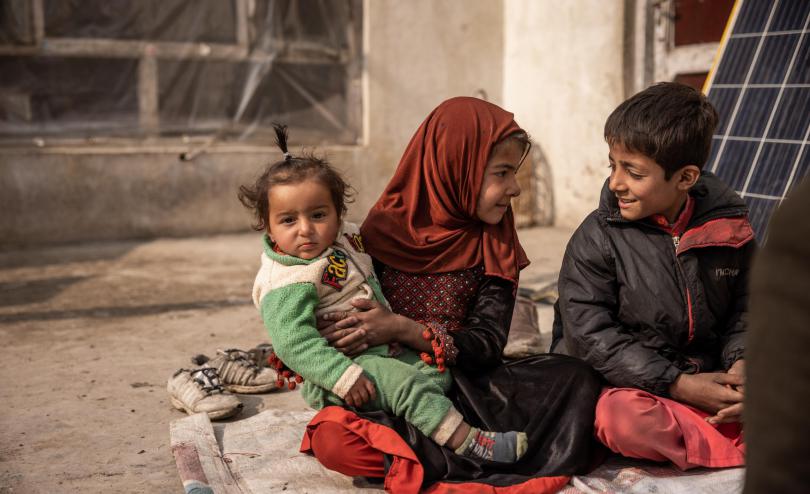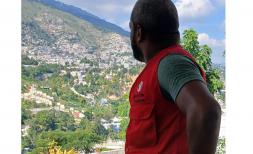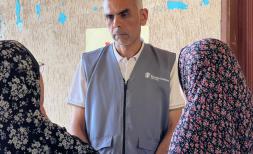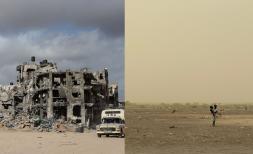Ending Child Poverty is a Policy Choice

Siblings Halima*, 6, Kamelah*, 18-months-old and Omfaruk*, 8, at their home in Kabul, Afghanistan. Jim Huylebroek / Save The Children.
More than half of the world’s people living in poverty are children. UNICEF and the World Bank estimate that 334 million of these children are extremely poor (living on less than US$2.15 per day) and approximately one billion are multidimensionally poor; missing out on adequate monetary resources, health, education, and living standards.
{cta | We urgently need your support to protect children. Donate now| https://donate.savethechildren.org/en/donate/donate-now-save-lives-sr| Donate}
Expanding child-centered social protection programmes is a proven way to reduce child poverty. Social protection is a set of public policies, programmes, and systems that help all people reach and sustain an adequate standard of living; improve their capacity to cope with risks and shocks throughout their life cycle; and claim their rights and enhance their social status. Save the Children promotes child-sensitive social protection, which focuses on the specific needs of children.
Monika, a grandmother from Kenya, is one of the millions of participants in social protection programmes. She receives a cash transfer for her grandson under the vulnerable child cash transfer programme, which the Kenyan Government is expanding. She spends most of the funds on food and housing but has also used them to start a weaving business which allows her to send her grandson to school.
‘My life was bad before I got this money… I used to carry my grandson with me to go and do domestic work. I had to come back quickly because his mother is deaf and has mental health issues… after I started getting the 2,000 shillings, things got much better…’
The impact of successful social protection programmes on reducing multidimensional child poverty is well documented across diverse contexts- from high- to low-income countries. In addition to addressing material deprivation, well-designed cash transfer social protection programmes can facilitate access to vital services and build resilience to shocks, which is increasingly important as vulnerable households confront climate change. Assessments of social protection expenditures have repeatedly shown that social benefits outweigh the costs of the programmes.
But children still lack access to social protection. Despite this clear case for investment in child-sensitive social protection, most vulnerable children from the poorest countries do not have access to it. Data shows an incremental increase of children with access to child benefits from 20% in 2009 to 28% in 2023, with only 9% of children from low-income countries covered[vi]. This compares to 85% in high-income countries.

Ladan*, 10, with mum Casho*, 30, and her siblings at home in Puntland, Somalia. Mustafa Saeed / Save the Children
We work in close collaboration with governments to improve the child-focus, inclusivity, effectiveness, and accountability of their social protection systems. Our work also includes some direct implementation of social protection programmes in low-income countries and fragile states.
We typically support ‘cash-plus’ programmes that are more effective than just distributing cash. Cash plus programmes pair cash transfers with other interventions including training, capacity building, and linkages to services for caretakers on parenting, nutrition, health, and early childhood development. Our growing evidence shows a strong impact of these programmes on child wellbeing including reduced poverty, reduced violence against children, and improved health, nutrition, and early childhood development.
We also partner to share evidence that we use to advocate for expansion of child-sensitive social protection. Together with UNICEF and the ILO, we launched the Child Benefits Tracker in February 2024.This interactive website includes data on child-sensitive social protection coverage, financing, policies, and programmes, country prospects, and good practices.
In a recent Save the Children-UNICEF-ILO event, Natalia Winder Rossi, UNICEF’s Director of Social Policy and Social Protection, said, ‘ending child poverty is a policy choice… and the investment case for investing in social protection is clear.’
Five recommendations for Governments to invest in social protection:
- Create and expand inclusive child sensitive social protection systems which target the most vulnerable children including those extremely poor, with disabilities, from ethnic minority groups, girls, on the move, and who lack registration.
- Increase, preserve, and prioritize investment in social protection programmes. Countries with low coverage can find creative ways to fund social protection such as Mongolia, which taxes its mining sector to provide universal coverage for children. Also, importantly, donors should support social protection systems and international financing entities such as the IMF need to safeguard them as many countries face increasingly unsustainable debt burdens.
- Ensure social protection systems are shock responsive. This includes building systems and programmes that are flexible to continue during and after shocks, that can adapt to evolving needs of children, and that complement humanitarian responses.
- Promote social protection programmes which are user friendly and accessible. Countries can now use technology to allow social protection participants to register via apps on phones and receive electronic payments. Many countries are also improving the management of data including beneficiary screening and data.
- Support the expansion of social protection to all children through universal child benefits. This can close coverage gaps, facilitate effective response to large scale shocks and build broad-based support for child-sensitive social protection programmes.







